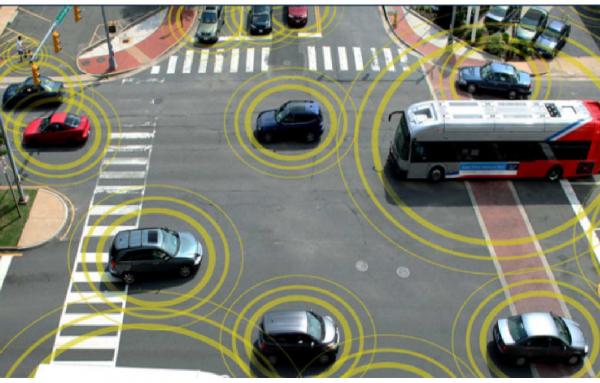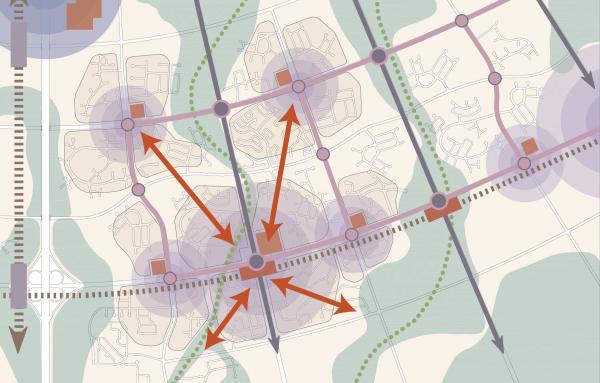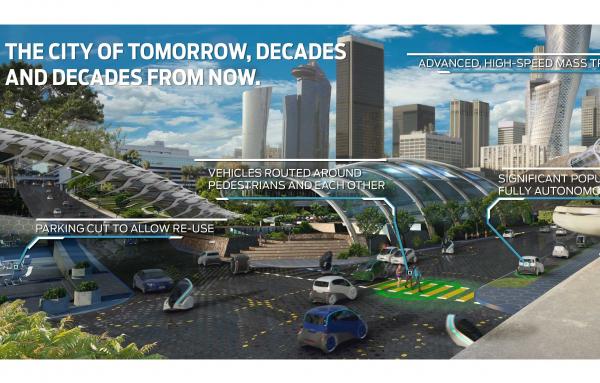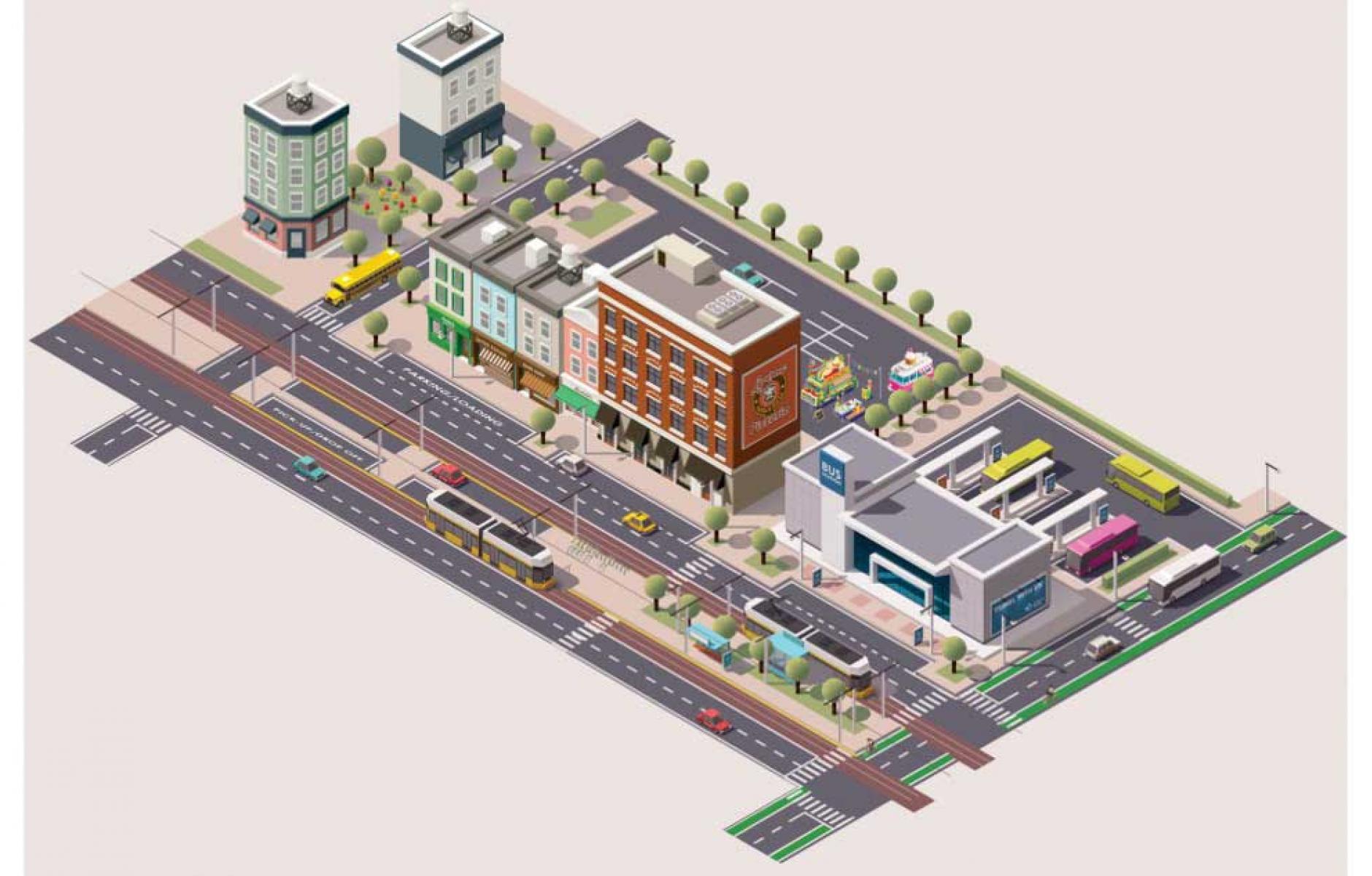
Ten steps toward autonomous urbanism
Today’s typical vision of the future city, how we travel, and how people interact physically and virtually is automated and mobile. As one example, Ford released its Cities of Tomorrow campaign to sell this type of “smart” city. This vision is largely defined by the private sector and technology companies.
The limits of this vision raise legitimate concerns. How safe is it? How accessible and affordable is it? Is it sustainable (do we consume fewer resources)? Is it spatially realistic (does it create more congestion rather than less)? Does it meet our human needs to socialize?
In Ten rules for cities about automated vehicles, Jeff Speck issued the “urbanist call to arms.” His defining questions boil down to this: given the difficulties in creating great communities now, how can we succeed when automobility is poised to get even more convenient?
The future doesn't have to be an all or nothing, and we can in fact develop meaningful city designs and policies using mobility technology to create positive human outcomes. But we do need to be realistic about how we create the positive outcomes.
While a growing list of guides charts the future, there are few resources to help us to get started now. This article turns the “call to arms” into a “call to action.” These “next steps” offer an approachable list of actions that can be used to prepare your company or community to create the human-oriented city of the future, using technology.
1) Define success
This step is an easy one, and it is likely that you already have an adopted policy or plan to work with. Do we want to be more walkable? Build safer streets? Create more affordable places to live? Expand economic opportunity? A great place to start is to revisit your community’s comprehensive plan or whatever you are using to define your long-term vision for the community. New technology and services should be used to accomplish your community’s goals related to mobility and quality of life. If you are in the middle of a planning process or about to embark on one in the next year, incorporating policy that specifically addresses mobility and technology is a great starting point to guide future decision-making related to smart cities.
Getting Started: In its New Mobility Playbook, the City of Seattle, WA, establishes [1] five Principles and five plays for shaping the future of transportation, in a way that puts people first. In creating Boston’s 2030 Transportation Plan (Go Boston 2030), the city’s first phase was a Question Campaign, a good way to engage residents on unknown technology where there are more questions than answers at this point.
2) Prepare for rapid flux in urban planning and jobs
Planning is often presented in three questions: What do we have? What do we want? How do we get there? However, in times of rapid change, it is difficult to know exactly what a community has - or wants. Planning is entering a new stage, shifting from a process to eliminate unknowns to one that integrates unknowns. For planners, this invokes a new host of skills and a new era of continuous training.
Scenario planning is replacing older forecasting models of projecting growth or decline from a baseline, which, thanks to technology, is in constant flux. Skills in data science and analytics are needed to process massive amounts of data and turn them into usable information for real-time service adjustments and predictive analytics.
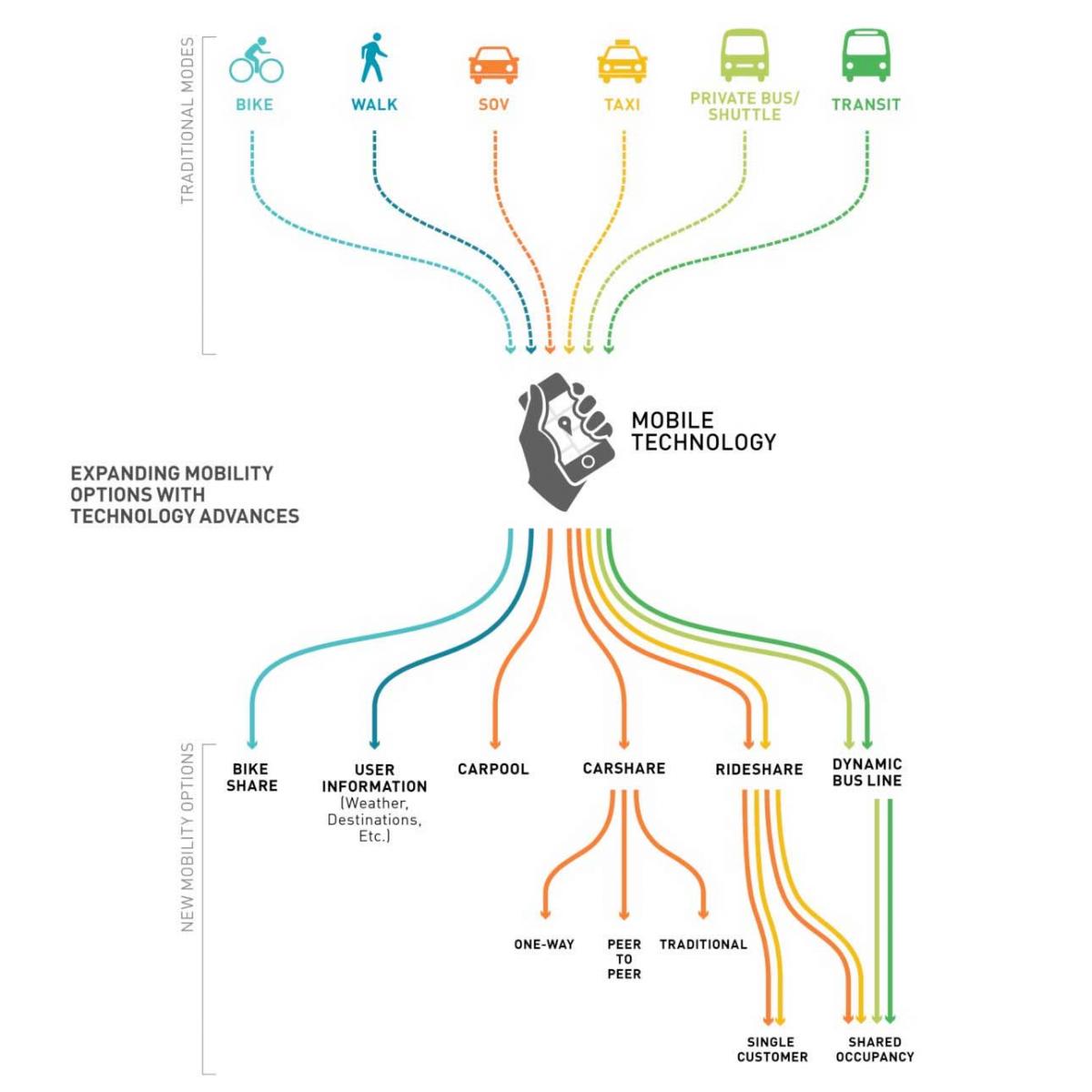
To keep up with the rapid changes, a new era of fast action and agile planning is needed. Make no mistake, effective civic outreach, thorough research and deliberate process are still important; however, the pace of change requires an equally-paced (or even faster) process to stay ahead of both positive and negative impacts. As examples, Los Angeles, CA, reduced community plan update cycles from 10 years to six and Nashville, TN, created a Rapid Goal Setting Plan to fast-track decisions.
Getting started: Check out Eno Center for Transportation’s work on scenario planning for transportation technology and the Lincoln Institute of Land Policy recently created the Consortium for Scenario Planning. Calthorpe Analytics recently released the scenario planning analytics tool urbanfootprint.io, which allows users to test development and redevelopment scenarios at various scales.
3) Engage communities, constituents, clients, and new allies
Communities need to have a conversation now because autonomous technology is not coming—it’s here. As with any complex topic, civic engagement will need to hit the most impactful aspects of new technology and, in particular, negative impacts. This is where information (and even field trips) from early-adopter cities is important. Technology companies need to sponsor demonstrations where the test drive becomes the test ride.
Convening stakeholders around AVs provides the chance for civic leaders, professionals, universities, mobility entrepreneurs, and the business community to see “who is doing what” at the local and state levels. From these meetings, a community can establish “next steps” and early priorities for action.
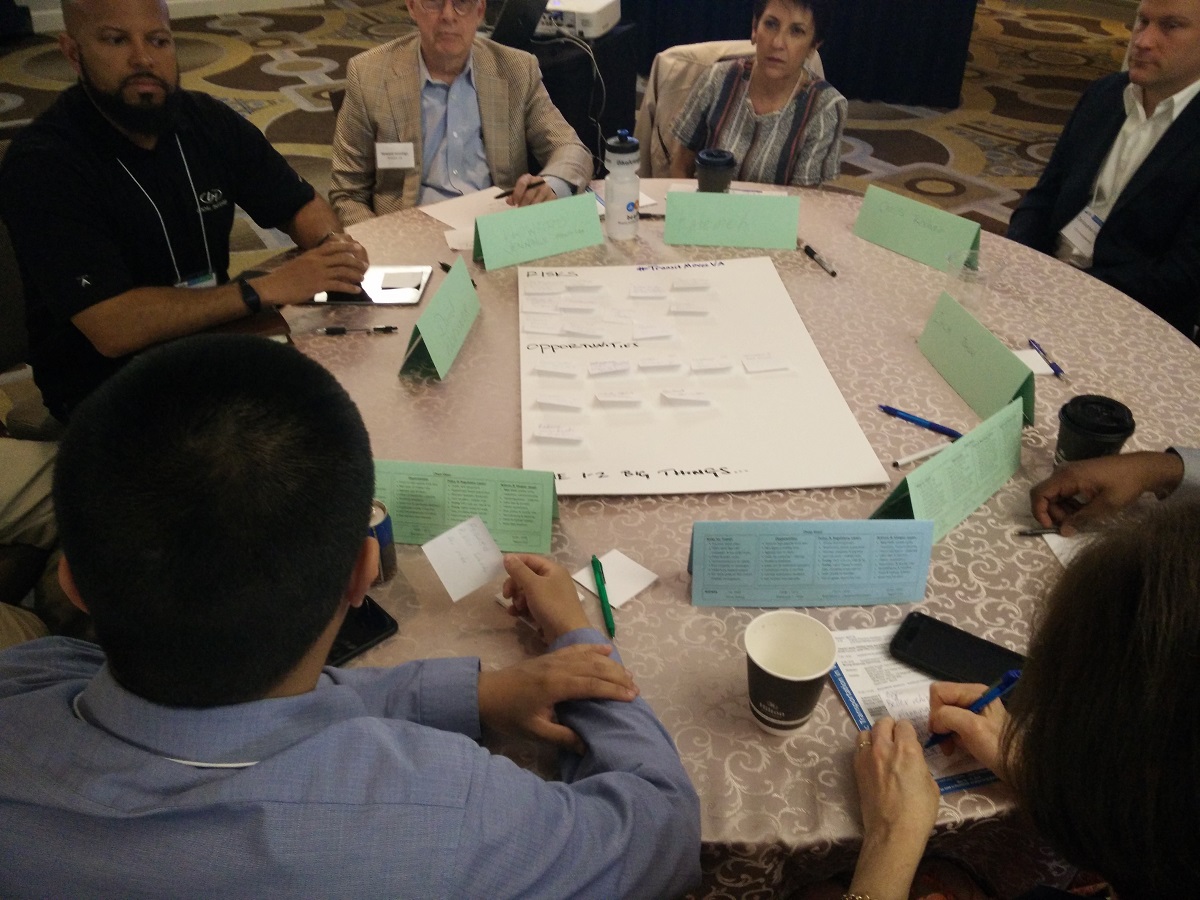
Getting started: Consider local and regional transportation technology groups. Good places to look are Meet-Ups, the Chamber of Commerce, or local universities. Land use and development chapters of organizations such as APA and the Urban Land Institute are taking on the issue locally. In the comments, let us know if you are involved in transportation technology and can host peer networking events for other CNU members.
4) Adopt a new mobility resolution
One of the most effective ways to formalize priorities is through a resolution. Resolutions, passed by local elected officials, establish expectations so when technology companies do come to town, there is clarity on what is—and is not—negotiable. For example, Beverly Hills, CA, passed a resolution listing top goals for autonomous vehicles such as connections to future Metro Purple Line stations and creating options for transporting senior citizens.
Cities and towns should also include transportation technology in planning updates underway. This is important because cities often require any new initiative or budget allocation be tied to language in a Comprehensive (or General) Plan. Even a single paragraph describing the need to plan for coming technology gives staff “permission” to initiate and budget for action.
Getting started: Alta Planning + Design created a guide to writing effective resolutions, with copy-and-paste language to get started. The Regional Plan Association released New Mobility: Autonomous Vehicles and the Region in advance of RPA’s Fourth Regional Plan for the New York-New Jersey-Connecticut metropolitan area.
5) Prepare for disruption at city hall
Autonomous vehicles are not the only disruption in town. From taxis to hotels, Uber, Lyft and airbnb are already causing unease in city hall, and they are only the beginning.
A new bus company, Cabin, offers overnight bus service between Los Angeles and San Francisco with sleeping pods. The cost is the same as a one-way plane ticket between the two cities, though the real money story is the amount of taxes left uncollected for a traveler otherwise flying in the night before and staying at a hotel: airport fees, airline taxes, hotel taxes.
Urbanists devote their lives to shaping the public realm, largely with public investment. Our new bottom line is doubling down on practices that meet multiple benefits while identifying sustainable and fair sources of new revenue.
Getting started: Arup has Drivers of Change cards available online for public engagement. Expand on the idea with other local drivers (e.g., a large business leaving or coming to your region). The University of Oregon’s Sustainable Cities Initiative has released The Impacts of Autonomous Vehicles and E-Commerce on Local Government Budgeting and Finance, a report that considers the impact of AVs on municipal budgets.
6) Design high performing, human-oriented streets
The future of streets must be people-oriented. Technology has the potential to make streets safer, more economically productive, less congested, and more engaging public spaces. To accomplish this, street design policies must be modified to not only address the negative impacts of auto-oriented street designs today but also account for new technology and services in the future.
Over the next decade, we will likely see renewed attention to corridors, with a technology twist. With autonomous technology, transit agencies are expected to phase out low performing routes while focusing on high capacity corridors. This is already underway in cities undertaking bus network redesign. Los Angeles is testing a combination of first/last mile approaches, shared-use mobility and shuttle systems feeding riders to corridors. Lanes next to curbs are likely to become flexible testbeds for a variety of new uses and transportation technology.
Getting Started: The National Association of City Transportation Officials (NACTO) recently released the Blueprint for Autonomous Urbanism. NACTO also has a series of street design guides to be used to create productive, safe, and people-oriented streets.
7) Take advantage of technology now
With all eyes on fully autonomous vehicles, we are missing a lot of technology available now to increase safety, mobility, and access to transit. For example, the current burst of innovation is not cars, but bicycles. Free-floating (or dockless) and e-bike bike share add even more convenience to bikeshare and demand for bike infrastructure.
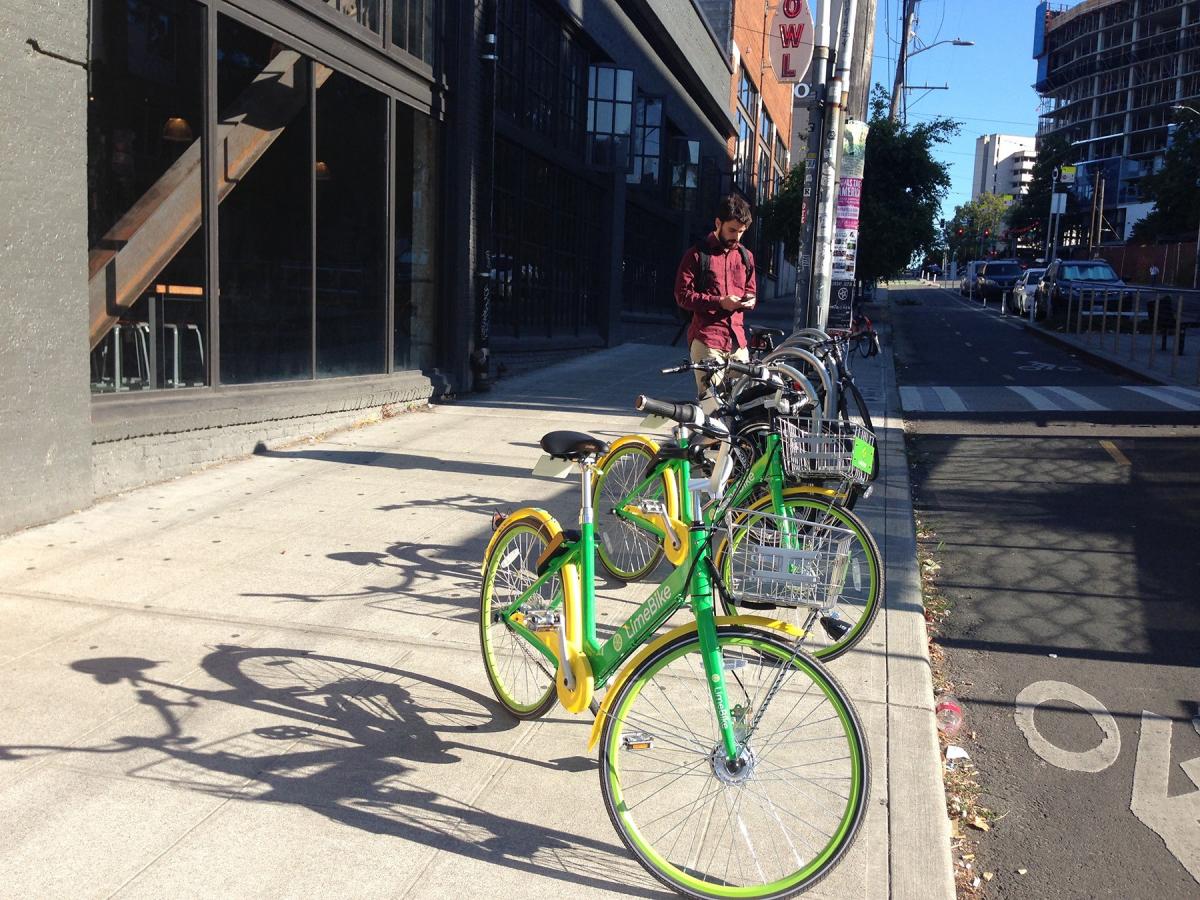
Cities are also piloting new transit services with shared-use mobility companies in the form of microtransit, paratransit, and connections to transit stations. These new programs are in early stages, so the jury is still out on performance and long-term sustainability. However, these small services can provide a "missing middle" level of transit service.
Lastly, cities can revamp their Transportation Demand Management (TDM) programs with new, widely available technology. The first step is to ensure a broad Digital Equity program similar to the policies Seattle, WA, has established. TDM program managers can list various mobile apps for users. For example, parking apps that direct drivers to available spaces can reduce congestion related to the parking space hunt.
Getting started: Check with your local Transportation or Public Works Department on the interest in, or status of, pilot projects (shared-use or autonomous options). Palo Alto, CA, has been in the news for it’s expanding (and successful) TDM programs like their employer assistance page.
8) Focus on transitions as transportation and technology advances
Autonomous cars will not appear on streets overnight. Rather, the technology will come in phases as new technology is tested, improved, and scaled.
The key is to track stages of transportation and smart city technology in categories: existing, trending, emerging, and future. This works for communities of all sizes, though it is important to note that every community will be at different stages. For example, a rural community may be ahead of the technology curve due to pilot programs at a University campus.
For planners, the trick will be defining conditions that initiate a new set of policies and planning. For example, using smart parking, a city can set a threshold (e.g., parking utilization drops below 70%) that triggers lower parking requirements.
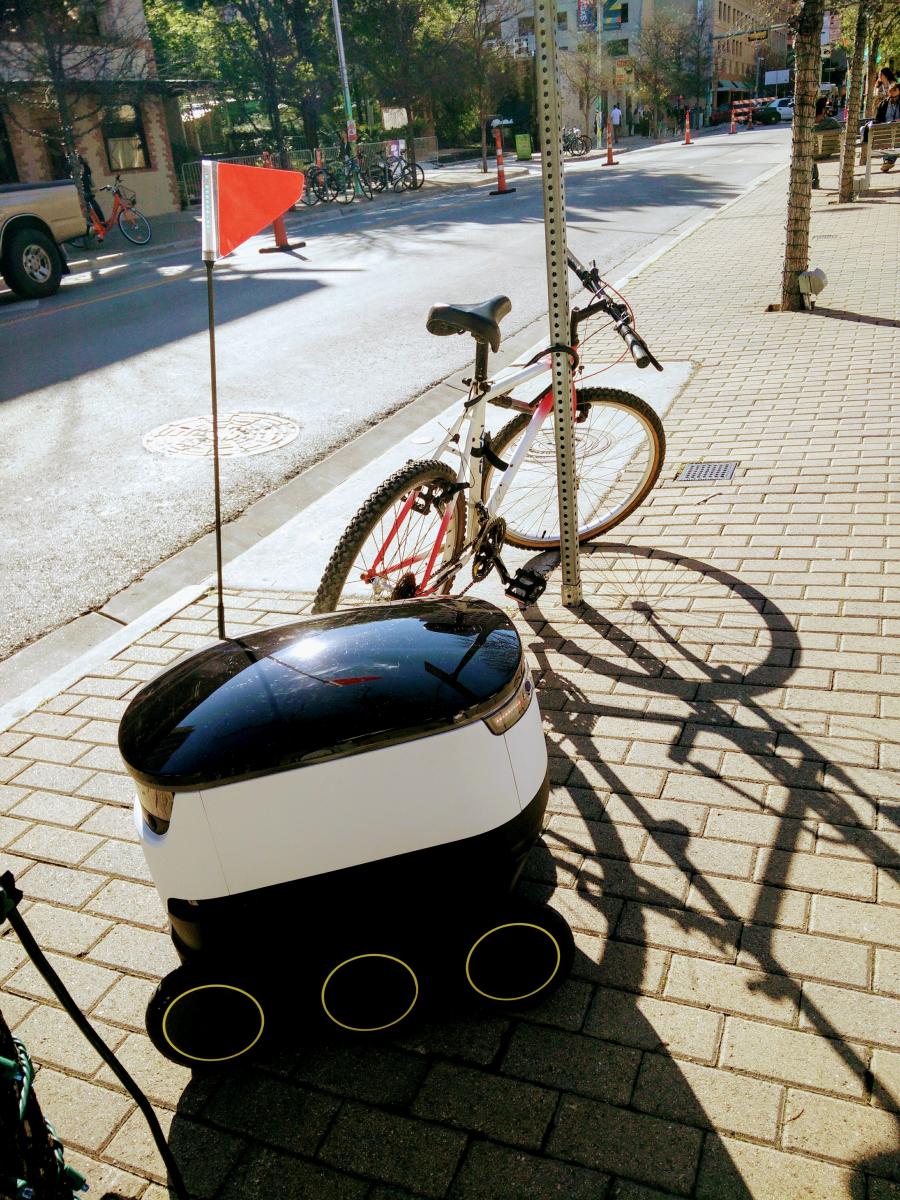
For architects, adaptive site and building design will be critical. For example, an architect working on a grocery store will treat parking spaces as a land bank for expansion and a flexible interior as e-commerce forces attention to logistics and deliveries. With so many changes on the horizon, design professionals will no longer plan an individual, static project, but rather site, infrastructure, and district plans that anticipate transitions as technology evolves.
Getting started: Determine where you (or your clients) are along the adoption curve for new mobility (shared-use, autonomous pilots). Get up to speed on technology; the American Planning Association just unveiled a Knowledgebase collection for autonomous vehicles with links to the growing list of reports and guides.
9) Adopt pilot projects as an implementation tool
In the same way that the technology industry prides itself on testing and iteration, so too should cities when it comes to street design and mobility services. Pilot projects can be done with the physical design of streets as well as the services provided along a street. Transportation technology companies are looking for places to test their products and services, and cities can use pilots as an opportunity to test policies, measure outcomes, and build public support for change at a smaller scale before a larger roll out of services.
Getting started: A section of the NACTO Urban Street Design Guide is focused on interim design strategies and how to put them into action. Another great resource is the Tactical Urbanist Guide to Materials and Design. It provides ideas for how you can change the shape and function of streets in days and weeks, not months and years.
10) Continue designing human-oriented cities
Our work shaping communities will still revolve around creating places people love. We will still be expected to develop meaningful civic engagement, a high quality public realm, and durable, sustainable community design. Whether vehicles have drivers or not, placemaking, transportation, infrastructure and open spaces are still our craft. We will still be standard bearers for equity, health, neighborhood revival, and durable design.
However, with rapid change, we need to sharpen our skills. The scope of needs can feel overwhelming, but the top list of things to address include:
- Change management
- Faster, but more effective, plan updates coordinated across Agencies and Departments
- A new focus on corridors (and future feeders to those corridors)
- Adaptive urban design (including new zoning codes)
- Continuous training - on a budget
Getting started: The Charter of the New Urbanism is a great point of reference for urbanism as all scales. The Project for Public Spaces provides placemaking resources for the public realm.
With both promise and peril, smart city and transportation technology is poised to radically remake all aspects of daily life. It’s up to urbanists to guide technology’s role in creating places people love. In the comments, please let us know what you are working on, so we can build our bench of experts.






